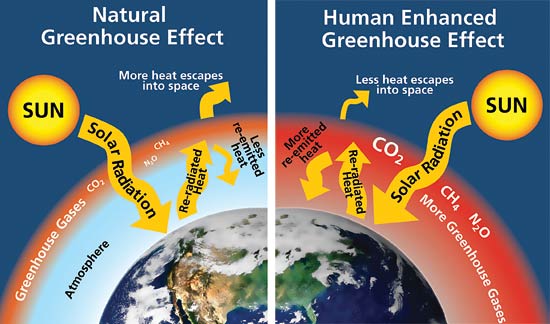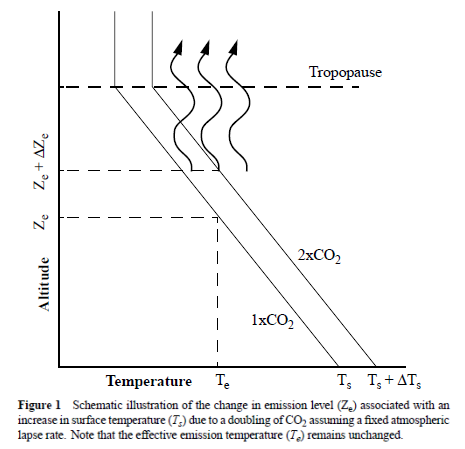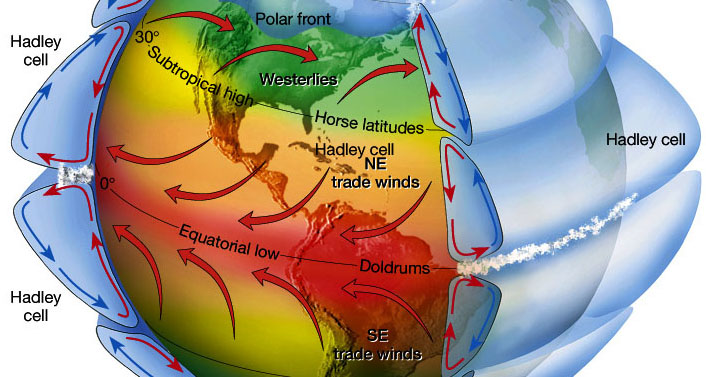8. CO2 does not – directly – heat up the atmosphere
In almost all explanations of the greenhouse effect, it is somehow claimed that greenhouse gases (GHG) absorb IR radiation and therefore must heat up the atmosphere. Then, because of the heating up, the atmosphere will also radiate back more energy to the surface and heat it up.
I think that is a wrong representation of what happens.
Radiation effect of GHG
Let’s consider a volume of air that receives radiation from the earth’s surface, which has reached thermal equilibrium state. The temperature has reached a value (Teq) at which all absorbed energy is radiated out again, of course in all directions.
If we now double the amount of GHG in the volume, the added molecules will receive the same amount of radiation, so they will also end up at Teq, at which they emit as much energy as they absorb. Increasing the GHG concentration does not affect Teq.
It does increase back radiation, so when the volume is close to the surface, it will heat up that surface, as we have easily quantified in our simulation. But the air temperature will remain the same, i.c. Teq. So there is no warming of the volume.
Saturation
When the GHG concentration reaches GHG sensitive IR saturation levels, an increase of GHG no longer increases the amount of absorbed IR, while the emission still increases linearly. This disturbs the equilibrium, so the temperature has to drop.
Therefore increasing GHG concentration does not heat up the atmosphere directly. If GH gases change temperature at all, they cool it down. But they still do warm the surface by an increase of re-radiation, even if they cool down the air. (more…)


